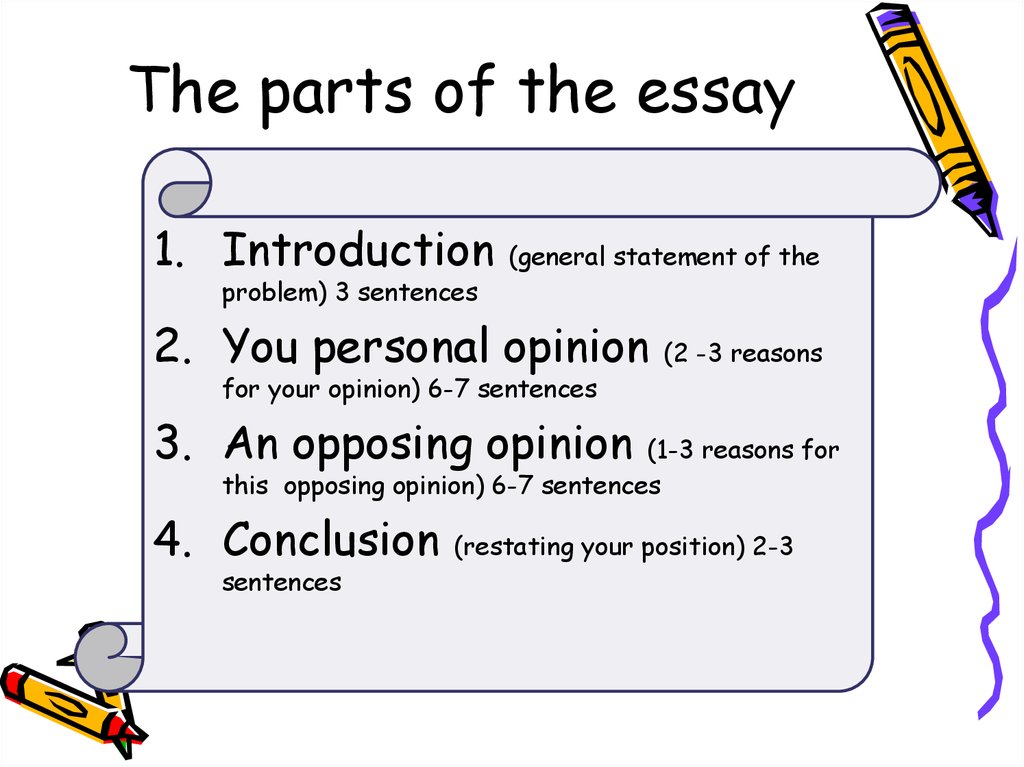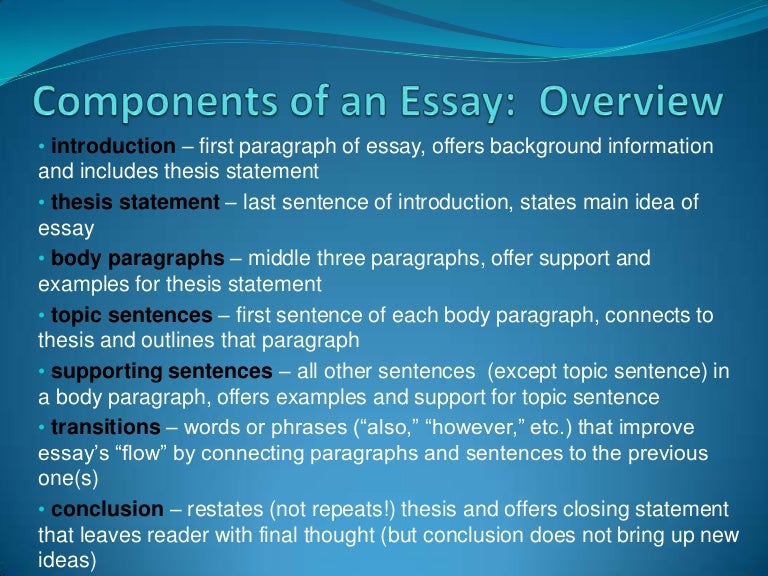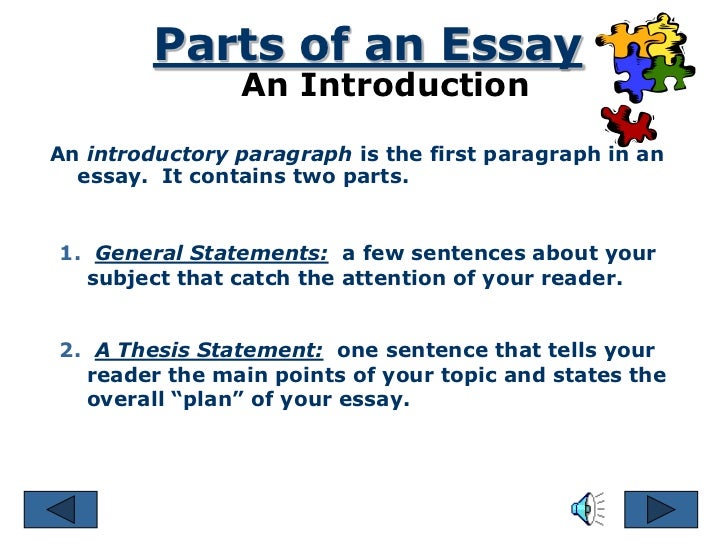General Guidelines on 5 Parts of an Essay
What are the 5 Parts of an Essay? The general essay outline should have the following 5 parts of an essay: Part 1- The introduction ; Part 2 – First paragraph of the body ; Part 3 – Second paragraph of the body ; Part 4 – Third paragraph of the body ; Part 5 – Conclusion Essays, like sandwiches or burgers, are divided into different parts. These parts are the: (move your mouse over the picture ) Introduction Body Conclusion Introduction The Introduction opens the essay. It is a short paragraph - usually about THREE sentences A typical essay contains many different kinds of information, often located in specialized parts or sections. Even short essays perform several different operations: introducing the argument, analyzing data, raising counterarguments, concluding. Introductions and conclusions have fixed places, but other parts don't

Components of an Essay
Essays, like sandwiches or burgers, are divided into different parts. These parts are the: (move your mouse over the picture ) Introduction Body Conclusion Introduction The Introduction opens the essay. It is a short paragraph - usually about THREE sentences · Basic essay structure: the 3 main parts of an essay. Almost every single essay that’s ever been written follows the same basic structure: Introduction; Body paragraphs; Conclusion; This structure has stood the test of time for one simple reason: It blogger.com: Lindsay Kramer Also, the evidence is essential in backing up the writer’s arguments, counter arguments, and rebuttals. As a result, such a paper has 5 parts of an essay: the introduction, writer’s arguments, counter arguments, refutation, and blogger.comted Reading Time: 7 mins

Parts of an Essay
The introduction part mainly comprises of an opening statement, a supporting statement, and the thesis statement. Ensure that you have all the necessary facts needed for your essay as you work on the introduction A typical essay contains many different kinds of information, often located in specialized parts or sections. Even short essays perform several different operations: introducing the argument, analyzing data, raising counterarguments, concluding. Introductions and conclusions have fixed places, but other parts don't Essays, like sandwiches or burgers, are divided into different parts. These parts are the: (move your mouse over the picture ) Introduction Body Conclusion Introduction The Introduction opens the essay. It is a short paragraph - usually about THREE sentences

Five-Paragraph Essay Outline
What are the 5 Parts of an Essay? The general essay outline should have the following 5 parts of an essay: Part 1- The introduction ; Part 2 – First paragraph of the body ; Part 3 – Second paragraph of the body ; Part 4 – Third paragraph of the body ; Part 5 – Conclusion The introduction part mainly comprises of an opening statement, a supporting statement, and the thesis statement. Ensure that you have all the necessary facts needed for your essay as you work on the introduction Parts of an Essay A. What do you know about academic essay structure? Are the following statements true or false? 1. Essays and paragraphs have a very different structure. .. 2. Essays must have a logical and cohesive structure. .. 3. Topic sentences introduce the main idea of an essay. .. 4

Quick Links
Parts of an Essay A. What do you know about academic essay structure? Are the following statements true or false? 1. Essays and paragraphs have a very different structure. .. 2. Essays must have a logical and cohesive structure. .. 3. Topic sentences introduce the main idea of an essay. .. 4 · Basic essay structure: the 3 main parts of an essay. Almost every single essay that’s ever been written follows the same basic structure: Introduction; Body paragraphs; Conclusion; This structure has stood the test of time for one simple reason: It blogger.com: Lindsay Kramer The introduction part mainly comprises of an opening statement, a supporting statement, and the thesis statement. Ensure that you have all the necessary facts needed for your essay as you work on the introduction
No comments:
Post a Comment